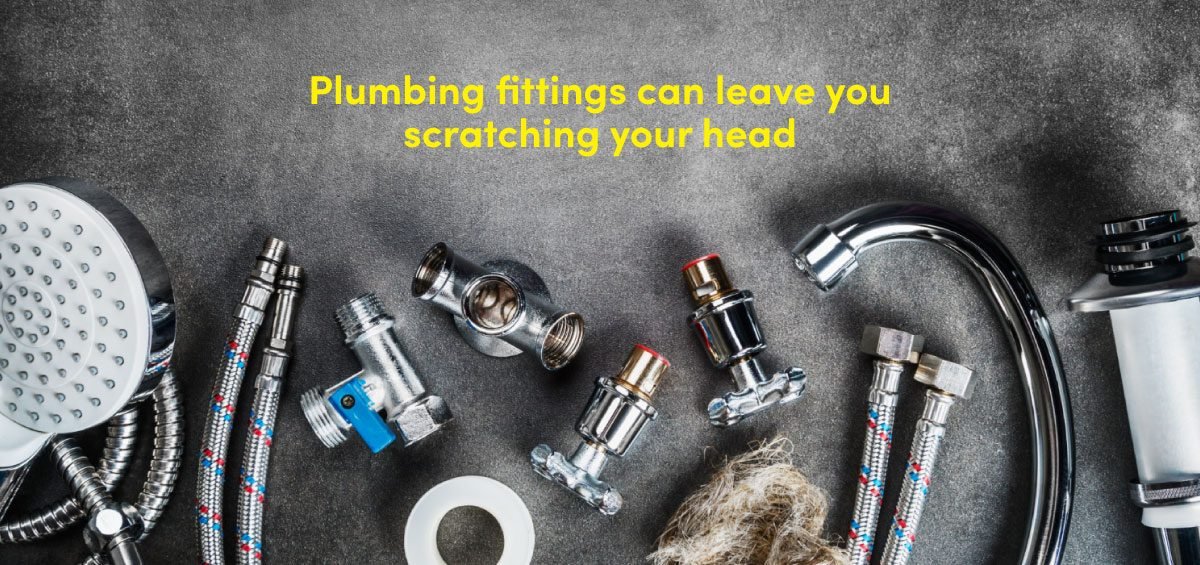Plumbing Services
Plumbing fittings can leave you scratching your head. That is why we thought of helping you.
For a normal and average homeowner, plumbing fittings are no less the Hebrew language. It is definitely a challenge because there are so many different types, materials to consider, and also sizes. The one you need depends on the job you will do. Various types of pipe fittings are available in plumbing systems for different purposes and functions. A pipe fitting is used in the plumbing system to join multiple pipes of the same size or different sizes, to regulate the flow, or to measure the flow. They are made up of different materials like copper, iron, brass, PVC, etc. So let’s learn something new today.
The different types of pipe fittings are:

Adapter
An adapter has male and female ends, the male having threads on the outside and the female on the inside. They’re used to connect different sized pipes, or even turn a male pipe into a female, and vice versa. There are three types of adapters: male, female, and straight-threaded. If one of the ends of the adapter is without threads, it needs to be welded or soldered onto the pipe. Adapters are essential when it comes to extending or terminating pipe runs. Leak-free adapters can withstand high pressure, commonly used in gas and water pipes. They also provide a smooth transition from the piping to tubing systems.
Elbow
Elbows are used to change the direction of flow between two pipes. Elbows are generally available with an angle of 22.5degrees, 45 degrees, and 90 degrees. If pipes are of the same diameter then normal elbows are used otherwise Reducer elbows are used. Elbows are made of different materials. These are generally coming with female threads and we can fix them by butt or socket welding also.
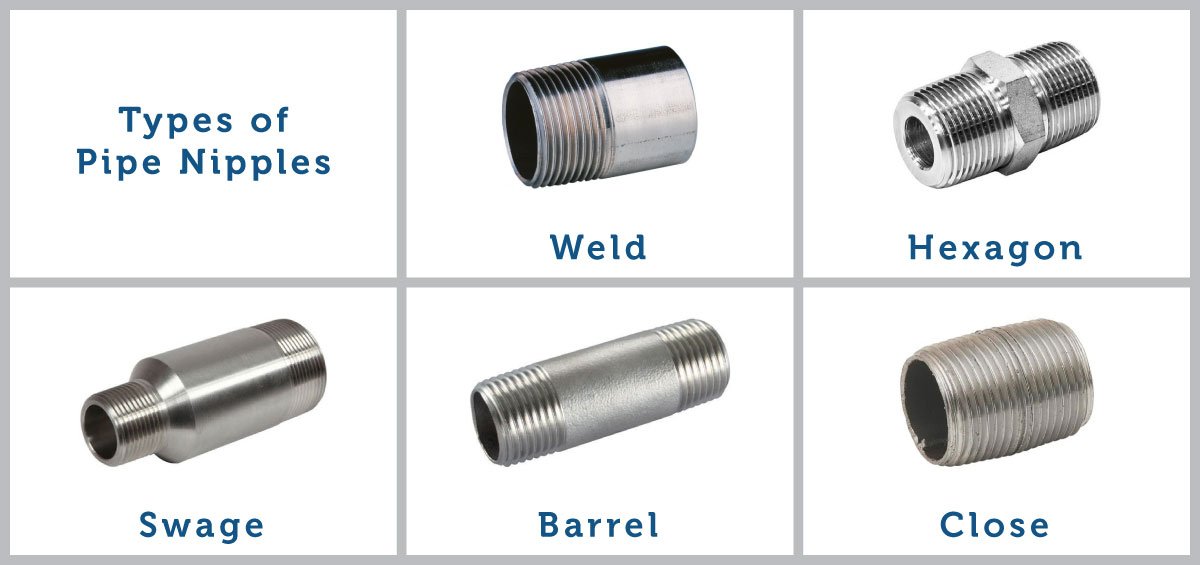
Nipple
A pipe nipple is one of the most popular types of fittings; it’s also very important. It connects pipes to appliances such as water heaters and connects two straight pipe runs. The nipple fitting has two male ends and comes in various materials and finishes, such as:
Brass | Aluminum | Copper | PVC | Carbon steel | Stainless steel
There are five types of pipe nipples, including:
- Weld nipple: Used to connect tube fittings. They’re strong and can be used under extreme pressure surges, vibrations, and changes.
- Hexagon nipple: This has two threaded ends and a hexagonal center. Available in a variety of materials, lengths, and threads.
- Swage nipple: Used to get fluids through one pipe size to a different size.
- Barrel nipple: Short tubular nipple with an external taper thread at each end, and is un-threaded in between.
- Close nipple: Threaded throughout both ends. Also referred to as a “running nipple.”
Before buying a pipe nipple, it’s important to consider material, thickness, and diameter to make sure you get the correct fitting.
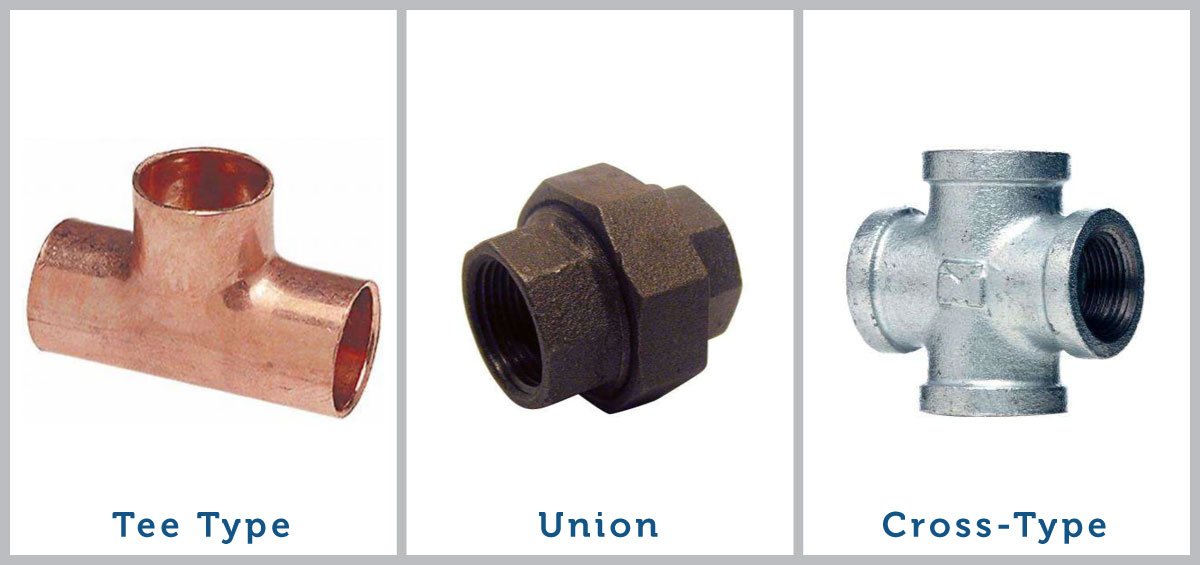
Tee Type
Tee type fitting is a component of the plumbing system which is in T-shape. It is having one inlet and two outlets, outlets are arranged at 90o to the mainline connection (inlet). It can also be used to combine the flow from two inlets to one outlet. They are also available in different materials and different sizes. If the 3 sides of T-fitting are similar in size then it is called an Equal tee otherwise it is called an Unequal tee.
Union
Union fittings are made up of three parts: a nut, a female end, and a male end. They’re designed to connect two pipes with the possibility of being detached without damage or deformation to the pipes. They’re conveniently used in maintenance or cases of planned replacements in the future. One of the many advantages of union fittings is that they’re easy to install. They’re used in various industrial and municipal applications such as process piping and wastewater systems. When buying a union fitting, consider which type and size you need.
Cross-Type
Cross-type fittings contain 4 openings in 4 directions. These are connected when there are 4 pipes meeting at a point. These fittings generate more amount of stress on the pipe as the temperature changes, because they are located at the center of four connection points. Cross fittings are generally used for fire sprinkler systems.
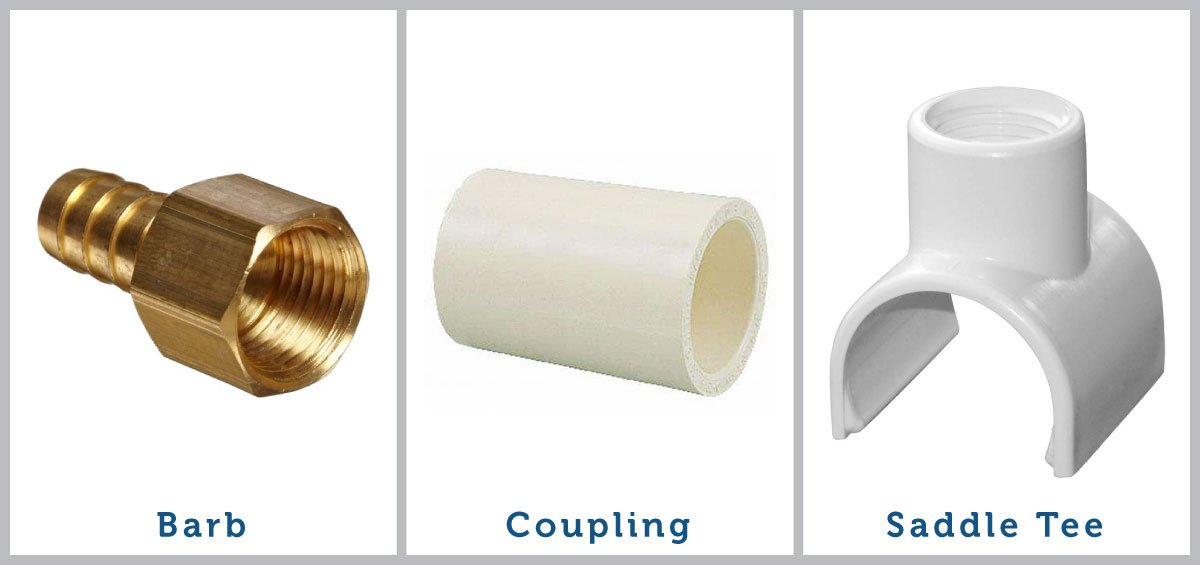
Barb
Barb fittings are generally male at one end and have a tapered and ridged cone at the other. They’re designed to grip the inside of a tube and seal the connection. As the barb fitting is inserted, the hose or tube will first expand and then relax. When the tube or hose relaxes and goes back to its original size, the connection is sealed and becomes difficult to undo. Barbed fittings are generally used in gas, air, and fluid control applications in low pressure. For water connections, plastic barbs are used for cold water. Brass barbs are used to carry hot water. Before buying a barb fitting, consider the following:
- Material compatibility
- Single or multi-barb
- The hardness of the tube or hose
- The inner diameter of the hose or tube
Coupling
A coupling is used to connect the pipes of the same diameter. Coupling is also useful if the pipe is broken or leakage occurs. Generally, there are two types of couplings available. Compression coupling and slip coupling. Compression coupling is a regular coupling that is connected between two pipes and it prevents leakage by the arrangement of gaskets or rubber seals on both sides, otherwise, glue is provided. Slip coupling is easier to install and it contains two pipes which are arranged as one into another, the inner pipe can slide up to some length. So, we can fix long length damaged pipe by slip coupling.
Saddle Tee
Saddle tees look very similar to a real saddle. They’re only available in PVC and used to add a tee to an existing pipe without the need to cut or re-solder. These are most often used in irrigation systems when you need to add a new sprinkler line. Saddle tees are “snapped” onto the pipe using glue. Once the glue is settled, a new hole is drilled.
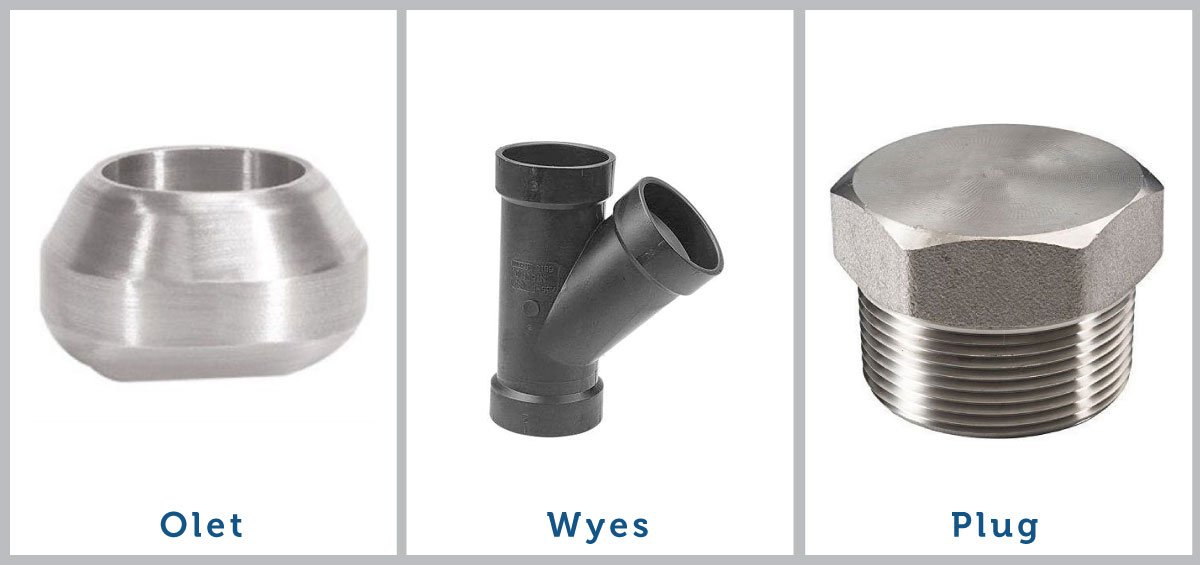
Olet
Olets are used when standard sizes of fittings are not suitable for our requirement. Sometimes the inlet pipe size is larger compared to outlet pipes in t-sections then also Olets are used. There are many types of olets available.
Wyes
Wyes look like the letter “Y.” They’re generally used in drainage fittings and have a 45-degree branch.
The angling of the branch is designed to reduce turbulence and friction. They connect vertical drain pipes to horizontal ones. Wyes fittings are available in:
- ABS
- PVC
- Brass
Plug
Plug is a component of plumbing component which is generally used to close pipe opening during inspections and repairs. Plug generally contains male threads.
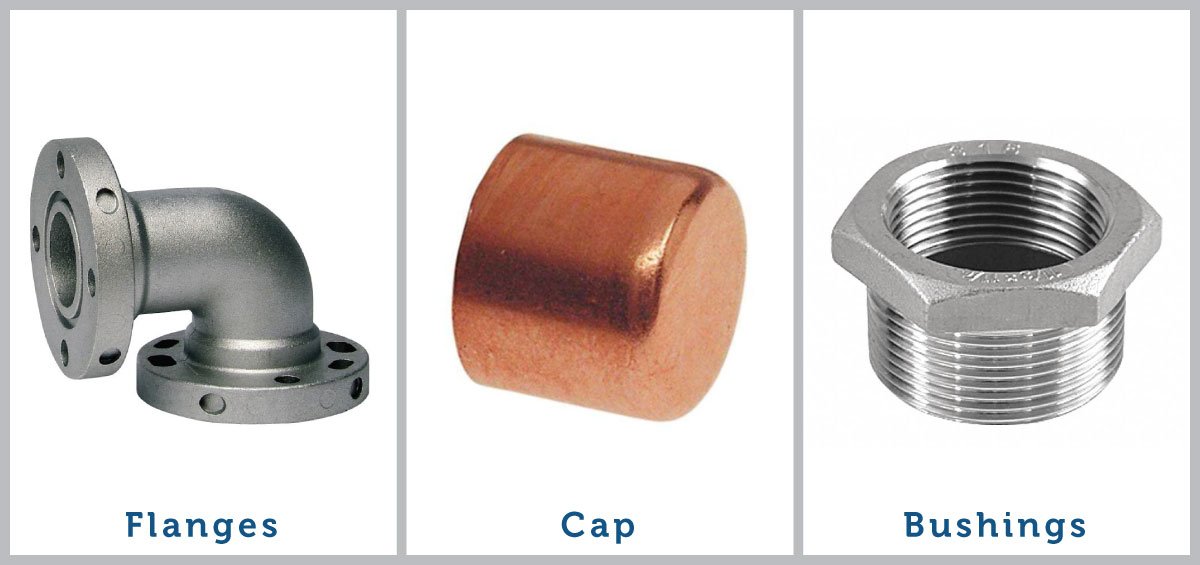
Flanges
A flange is a round fitting used to connect pipes. The pipes are either threaded or welded to the middle of the flange, and then sealed together. The holes on the outside are used for bolts. Flanges are mainly used in industrial applications due to their ability to handle high pressure. You can also find flanges in residential pump systems. At home, PVC flanges are used when mounting toilets to the floor. These are also referred to as “closet” flanges.
Cap
Cap is a type of pipe fitting whose function is the same as a plug but the only difference is the plug contains male threads and the cap contain female threads which are screws on the male thread of pipe. These are available in different materials like rubber, copper, steel, plastic, etc.
Bushings
Bushings look like small screws. They’re mainly used to connect pipes of different sizes, reducing a large fitting to a small pipe. These can be threaded on the inside and outside; however, this is not always the case. Bushing fittings are smaller than unions and couplings, and are, therefore, often used in the same situations.
Therefore it’s crucial for you to use the correct fittings for the different areas. Even if you do not use it personally, at least we hope you will now be able to identify the type of plumbing fitting.
Healthy Homes with its expert and experienced technical team can assess and repair external walls. Give us a call today on 1800-419-4647.

